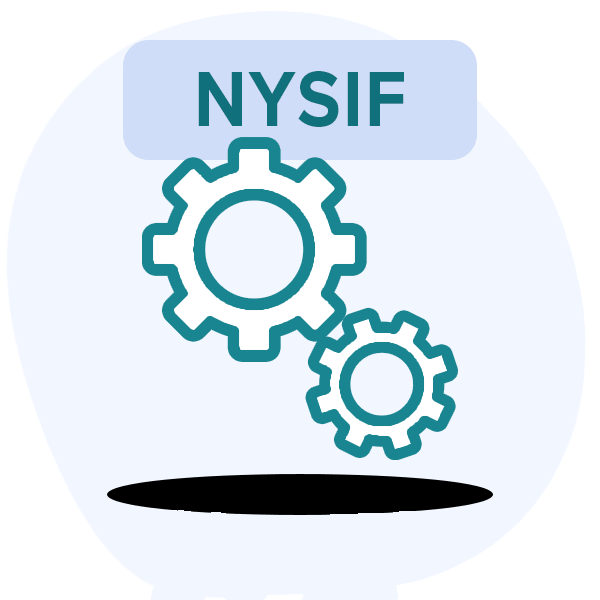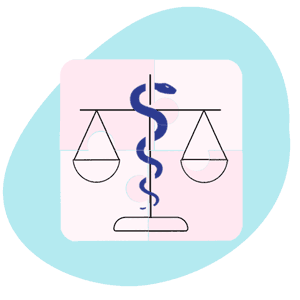NYSIF e-EOB Non-Compliance Rises in 2025

The New York State Insurance Fund (NYSIF) is making it harder for providers to treat the state’s injured workers by repeatedly failing to comply with payment requirements for electronic bills (e-bills).
For workers’ comp treatment, New York has required all payers to accept providers’ e-bills since October 2021. In August 2025, e-billing became mandatory for all providers. Yet, daisyData show that this year so far, the rate at which NYSIF fails to respond to e-bills compliantly has been climbing.
Payers must respond to e-bills with electronic Explanations of Benefits (e-EOBs), which automatically post payment information to the provider’s e-billing system.
e-EOBs save countless hours of manual work parsing and posting paper EOBs, allowing practices to take on workers’ comp patients more easily. In 2025 so far, NYSIF has failed to send an e-EOB for 9% of daisyBill providers’ e-bills, with monthly non-compliance peaking at 18% in July.
This represents thousands of e-bills that practice staff had to post manually, as if they were doing business in 1998.
NYSIF is New York’s largest workers’ comp carrier and the insurer of last resort, covering millions of employees. Their technical failures have a significant impact on practices across the state.
Below, see the data on NYSIF’s failure to comply with New York payment requirements, keeping in mind that all of these providers are complying with New York requirements to submit bills electronically.
NYSIF e-EOB Data
New York payers, including NYSIF, have 45 days to remit payment and the EOB in the appropriate format.
Multiple Subject Numbers, web pages, and other updates from the New York Workers’ Compensation Board (WCB) confirm that when a provider bills electronically (as all providers must since August 1), the payer must (emphases ours):
"...electronically transmit Explanation of Benefits/Explanation of Reviews (EOBs/EORs) to their electronic submission partners upon adjudication of the associated electronic CMS-1500 medical bills.”
However, the data show that NYSIF is inconsistent in complying with this mandate, repeatedly failing to send e-EOBs.
Below, see the monthly data for NYSIF for January through September of 2025:
e-Bill Submission Month |
daisyBill e-Bills Sent to NYSIF |
e-EOB Missing Count |
e-EOB Missing % |
2025-01 |
463 |
39 |
8% |
2025-02 |
511 |
3 |
1% |
2025-03 |
690 |
20 |
3% |
2025-04 |
3,818 |
220 |
6% |
2025-05 |
3,698 |
177 |
5% |
2025-06 |
3,502 |
146 |
4% |
2025-07 |
4,318 |
794 |
18% |
2025-08 |
4,923 |
675 |
14% |
2025-09 |
5,336 |
288 |
5% |
Totals |
27,259 |
2,362 |
9% |
Checks Covering Multiple Bills: A Major Burden on Practices
Adding to providers’ administrative burden, NYSIF often remits a single large check covering multiple bills. As a result, practice staff must dedicate enormous amounts of time and energy to:
- Parsing the individual paper EOBs for reported payment amounts
- Manually reconciling the EOB amounts with the total check amount
Instead of being able to see instantly how much NYSIF paid for each bill and line item, as happens when payers send e-EOBs, practices must devote their resources to old-school bookkeeping simply because NYSIF fails to comply with WCB requirements.
If practices fail to do the work necessary to reconcile the bulk payments and paper EOBs, they lose visibility into whether NYSIF pays correctly, throwing revenue management into chaos and potentially missing opportunities to dispute incorrect denials and reductions.
NYSIF’s non-compliance forces practices to waste time and resources that they otherwise could devote to patient care.
A Single Standard for Compliance
Every provider using daisyBill as their electronic submission partner is billing in compliance with NY state requirements. If they failed to do so, the payers would be free to ignore their bills and withhold reimbursement; the WCB has announced that they will take no action to enforce payment of paper bills.
The compliance standard should go both ways.
New York wisely instituted mandatory e-billing to make the workers’ comp system more efficient and effective in delivering care. As California demonstrates on a near-daily basis, lopsided enforcement of billing requirements can only have the opposite result: providers fleeing the system and making care less accessible.
Don’t settle for a clearinghouse. daisyBill is a WCB-approved e-billing partner. Click below to learn more:
BILL BETTER: DAISYBILL
DaisyBill provides content as an insightful service to its readers and clients. It does not offer legal advice and cannot guarantee the accuracy or suitability of its content for a particular purpose.


.gif)

.png)
.gif)